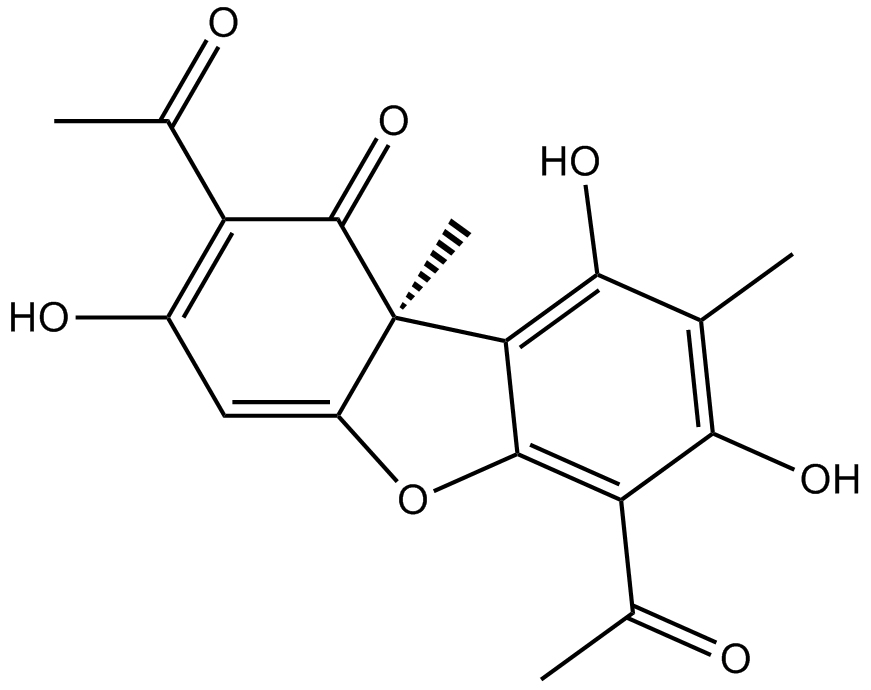(+)-Usniacin |
| Catalog No.GC17330 |
(+)-Usniacin은 지의류에서 분리되어 mTOR의 ATP 결합 포켓에 결합하고 mTORC1/2 활성을 억제합니다. (+)-Usniacin은 mTOR 다운스트림 이펙터의 인산화를 억제합니다: Akt(Ser473), 4EBP1, S6K는 항암 활성과 함께 자가포식을 유도합니다. (+)-Usniacin은 황색 포도상 구균, Enterococcus faecalis 및 Enterococcus faecium을 포함한 많은 플랑크톤 그람 양성 박테리아에 대한 항균 활성을 가지고 있습니다.
Products are for research use only. Not for human use. We do not sell to patients.

Cas No.: 7562-61-0
Sample solution is provided at 25 µL, 10mM.
MIC: 0.05 μg/62.5 μl to 3.1 μg/62.5 μl
Microorganisms can colonize a wide variety of medical devices, putting patients at risk for systemic and local infectious complications, including local-site infections, endocarditis, and catheter-related bloodstream infections. (+)-Usniacin is a secondary lichen metabolite that possesses antimicrobial activity against various planktonic gram-positive bacteria.
In vitro: (+)-Usniacin showed antimicrobial activity against the same microorganisms as that of acetone extract. Among the three analogues it was the most active one having quite low MIC values. Furthermore, (+)-Usniacin did not show any activity against A. hydrophila and B. cereus whereas (D)-usnic acid did. On the other hand, (+)-Usniacin was active against Y. enterocolitica whereas (D)-usnic acid was not active [1].
In vivo: No animal in-vivo study has been reproted so far.
Clinical trials: Trials carried out in volunteers showed that mouth-rinse with (+)-Usniacin preparations exerted a selective and long lasting action against S. mutans. The adherence of S. mutans to smooth surfaces was not increased by the presence of subinhibiting concentrations of (+)-Usniacin. These characteristics make (+)-Usniacin a suitable candidate for topical use in oral medicine [2].
References:
[1] Tay T, Türk AO, Yilmaz M, Türk H, Kivanç M. Evaluation of the antimicrobial activity of the acetone extract of the lichen Ramalina farinacea and its (+)-usnic acid, norstictic acid, and protocetraric acid constituents. Z Naturforsch C. 2004 May-Jun;59(5-6):384-8.
[2] Ghione M, Parrello D, Grasso L. Usnic acid revisited, its activity on oral flora. Chemioterapia. 1988 Oct;7(5):302-5.
Average Rating: 5 (Based on Reviews and 31 reference(s) in Google Scholar.)
GLPBIO products are for RESEARCH USE ONLY. Please make sure your review or question is research based.
Required fields are marked with *




















